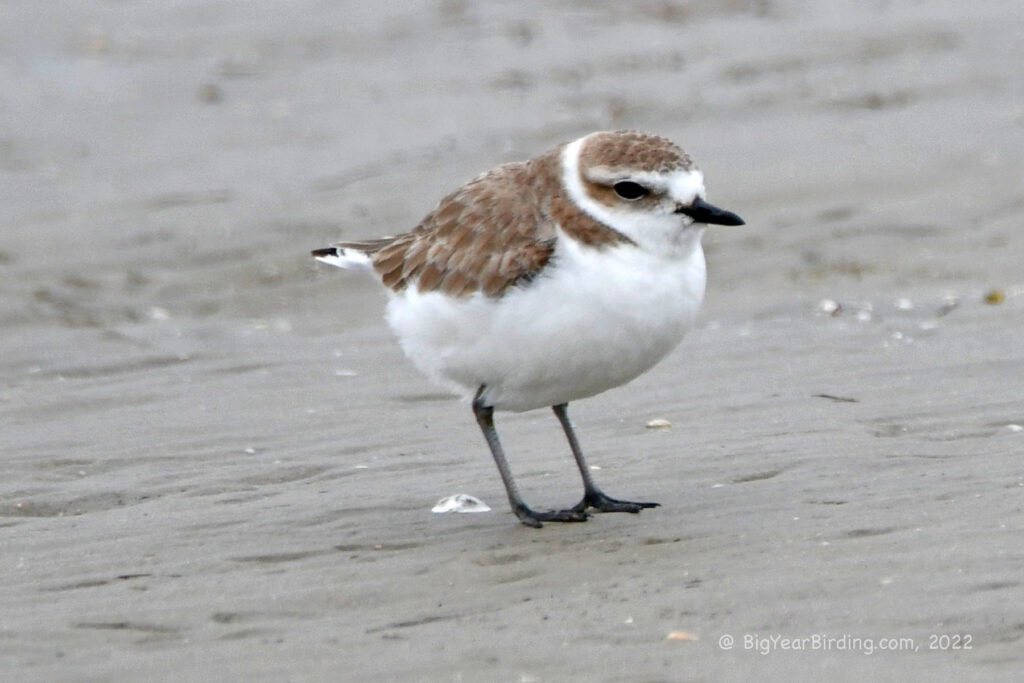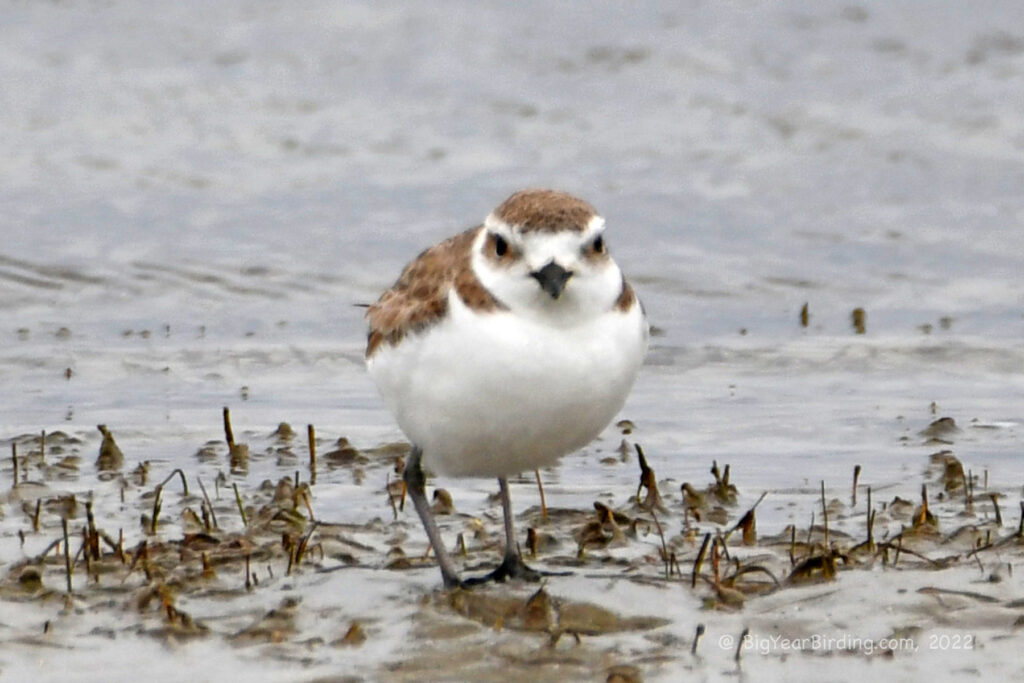
The snowy plover (Charadrius nivosus) is a small shorebird that inhabits sandy beaches and dunes along the coast of the United States and Mexico. Adults measure approximately 6.5 inches in length and weigh around 1.2 ounces, making them one of the smallest plover species in North America.
The snowy plover has several distinguishing field marks, including a white forehead and supercilium, black mask and bill, and gray-brown upperparts. In flight, they display a distinctive black and white striped pattern on their wings. During breeding season, males display a darker black plumage, and both sexes develop a small fleshy projection on their forehead called a “crown bump.”
Snowy plovers are migratory birds, with populations from the northern part of their range wintering in the southern part. They breed along the coast from Washington to Baja California, Mexico, and winter along the coast from Washington to Guatemala. In some areas, they are year-round residents, particularly in parts of California and Mexico.
The snowy plover is listed as a threatened species under the Endangered Species Act due to habitat loss and degradation, predation, and disturbance from human activities. Conservation efforts, including habitat restoration and management, predator control, and education and outreach, have helped increase populations in some areas.
Snowy plovers are adapted to life on sandy beaches and dunes, where they feed on small invertebrates such as crustaceans and insects. They use a unique foraging technique called “foot-trembling,” where they stand in one spot and rapidly vibrate their feet to flush out prey from the sand. They also nest on the ground in small depressions, which are often camouflaged with bits of vegetation and shell fragments.

In summary, the snowy plover is a small shorebird with distinctive black and white markings, measuring approximately 6.5 inches in length and weighing around 1.2 ounces. They are migratory birds, breeding along the coast from Washington to Baja California, Mexico, and wintering along the coast from Washington to Guatemala. They are listed as a threatened species due to habitat loss and degradation, predation, and disturbance from human activities, but conservation efforts have helped increase populations in some areas. Snowy plovers are adapted to life on sandy beaches and dunes, feeding on small invertebrates and using a unique foraging technique called foot-trembling. They also nest on the ground in small depressions camouflaged with vegetation and shell fragments.

